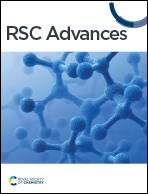Recent development of analytical methods for disease-specific protein O-GlcNAcylation
Abstract
The enzymatic modification of protein serine or threonine residues by N-acetylglucosamine, namely O-GlcNAcylation, is a ubiquitous post-translational modification that frequently occurs in the nucleus and cytoplasm. O-GlcNAcylation is dynamically regulated by two enzymes, O-GlcNAc transferase and O-GlcNAcase, and regulates nearly all cellular processes in epigenetics, transcription, translation, cell division, metabolism, signal transduction and stress. Aberrant O-GlcNAcylation has been shown in a variety of diseases, including diabetes, neurodegenerative diseases and cancers. Deciphering O-GlcNAcylation remains a challenge due to its low abundance, low stoichiometry and extreme lability in most tandem mass spectrometry. Separation or enrichment of O-GlcNAc proteins or peptides from complex mixtures has been of great interest because quantitative analysis of protein O-GlcNAcylation can elucidate their functions and regulatory mechanisms in disease. However, valid and specific analytical methods are still lacking, and efforts are needed to further advance this direction. Here, we provide an overview of recent advances in various analytical methods, focusing on chemical oxidation, affinity of antibodies and lectins, hydrophilic interaction, and enzymatic addition of monosaccharides in conjugation with these methods. O-GlcNAcylation quantification has been described in detail using mass-spectrometric or non-mass-spectrometric techniques. We briefly summarized dysregulated changes in O-GlcNAcylation in disease.

- This article is part of the themed collection: 2022 Reviews in RSC Advances


 Please wait while we load your content...
Please wait while we load your content...